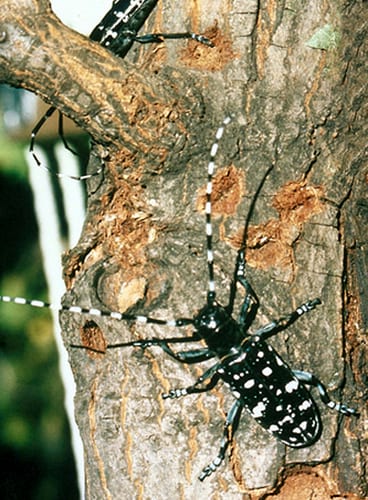Anoplophora chinensis
The citrus long-horned beetle poses an unprecedented threat to the environment in North America because it attacks healthy trees and has no natural enemies. Not only are greenbelts, urban landscapes and backyard trees at jeopardy, but also orchards, forests, and endangered salmon, and wildlife habitat.
Each female beetle can make up to 200 eggs after mating, and each egg is separately deposited in tree bark.
After the larvae hatches, it chews into the tree, forming a tunnel that is then used as a place for beetle pupation (the process of growing from larvae to adult). From egg-laying to pupation and adult emergence can take twelve to eighteen months.
Infestations by the beetle can kill many different types of hardwood trees as well as citrus trees, pecan, apple, Australian pine, hibiscus, sycamore, willow, pear, mulberry, pigeon pea, Chinaberry, poplar, litchi, kumquat, Japanese red cedar, oak, and Ficus.
This beetle poses an unprecedented threat to the environment in North America because it attacks healthy trees and has no natural enemies. Not only are greenbelts, urban landscapes and backyard trees at jeopardy, but also orchards, forests, and endangered salmon, and wildlife habitat


